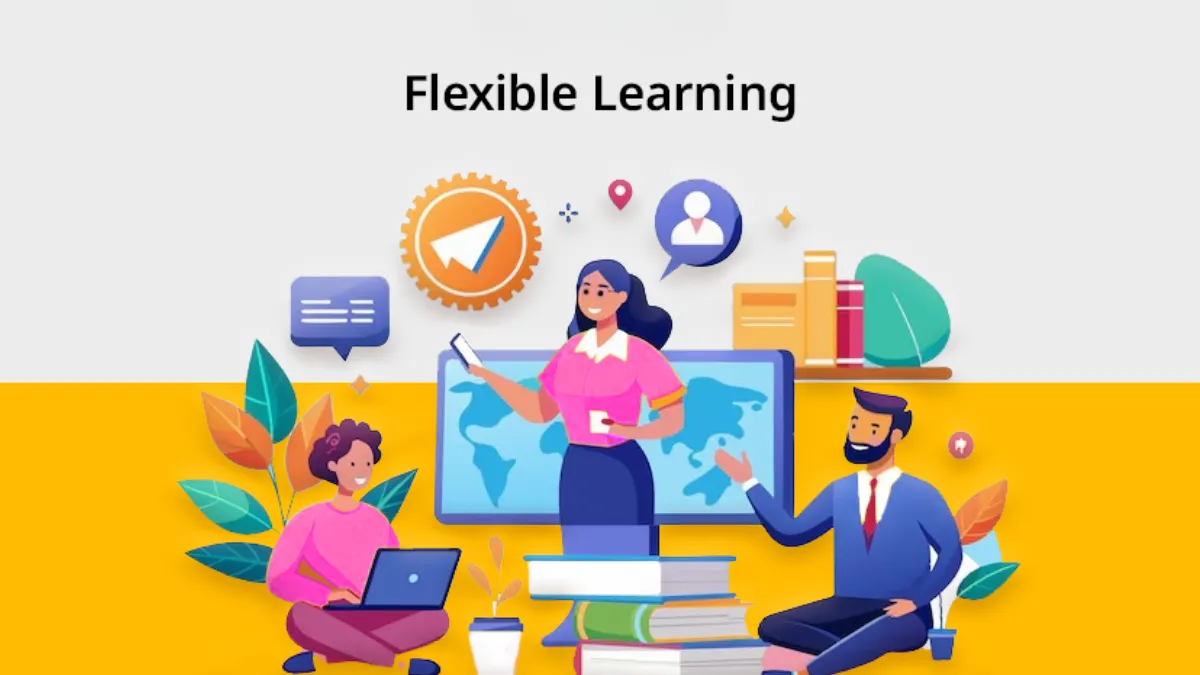Digital Evolution Of Lifelong Learning, Education is undergoing a seismic shift. What was once confined within the four walls of a classroom is now accessible across continents through the power of the internet. The transition from traditional education to digital learning isn’t just a trend—it’s a transformative movement redefining how we acquire, apply, and retain knowledge throughout our lives.
Lifelong learning, once a philosophical ideal, is now an attainable reality. Thanks to advances in digital technology, artificial intelligence, online platforms, and cloud-based systems, learning is more personalized, flexible, and scalable than ever before.
The Rise of Digital Education

The internet has democratized education. No longer do students need to live near elite institutions to receive a quality education. Massive Open Online Courses (MOOCs), online certifications, webinars, and virtual universities now bring world-class content to anyone with a Wi-Fi signal.
Key drivers of this shift include:
- Accessibility: Digital tools break down geographical, financial, and time-based barriers.
- Affordability: Online courses often cost significantly less than traditional tuition fees.
- Scalability: A single platform can educate thousands or even millions of learners simultaneously.
- Customization: AI enables tailored learning experiences based on an individual’s pace and preferences.
The Cloud as the New Campus
Digital Evolution Of Lifelong Learning, Cloud computing has emerged as the backbone of digital learning. With the cloud, educational content, student data, collaboration tools, and performance analytics are stored in one centralized, easily accessible environment.
Benefits of Cloud-Based Learning:
- Flexibility: Learners can access materials anytime, anywhere.
- Collaboration: Real-time sharing, group work, and feedback.
- Security: Encrypted storage protects sensitive data.
- Efficiency: Reduced reliance on paper and hardware.
Institutions are rapidly moving their infrastructures to cloud platforms to keep up with the growing demand for online education.
Artificial Intelligence & Personalized Learning
Digital Evolution Of Lifelong Learning, AI is revolutionizing digital education by enabling smart, data-driven instruction. Whether it’s adaptive testing, automated feedback, or real-time progress tracking, AI brings powerful tools to the digital classroom.
How AI Enhances Learning:
- Personalized Pathways: Algorithms recommend lessons and materials tailored to a learner’s abilities and interests.
- Chatbots: Available 24/7 to answer queries and guide learners.
- Predictive Analytics: Early detection of student disengagement or learning gaps.
- Automated Assessment: Faster, bias-free grading and progress reports.
AI doesn’t replace teachers—it empowers them to become more effective mentors.
Microlearning & On-Demand Knowledge
In today’s fast-paced world, attention spans are shorter and time is scarce. Microlearning—short, focused bursts of learning—is the perfect response.
Benefits of microlearning:
- Fast and efficient learning.
- Just-in-time access to skills.
- Higher retention due to focused content.
YouTube tutorials, TikTok explainers, podcasts, and infographic slideshows all cater to modern learners hungry for bite-sized knowledge.
Gamification: Making Learning Addictive
Gamification adds elements like badges, leaderboards, challenges, and rewards to educational content. The result? Learners become more engaged, motivated, and eager to return.
Popular examples include:
- Duolingo: Makes language learning a game.
- Kahoot!: Turns quizzes into interactive battles.
- Coursera’s XP System: Tracks progress like a role-playing game.
These gamified approaches turn passive learning into active exploration.
Challenges of Digital Learning
Digital Evolution Of Lifelong Learning, While the benefits are abundant, digital learning also poses unique challenges:
- Digital Divide: Not everyone has access to devices or reliable internet.
- Screen Fatigue: Long hours on screens can lead to burnout.
- Isolation: Lack of in-person interaction can hinder social skills.
- Quality Control: A flood of content makes it hard to find credible sources.
Addressing these issues requires ongoing innovation, policy reform, and public-private partnerships.
The Role of Educators in a Digital Age
Teachers are no longer just transmitters of knowledge—they are facilitators, mentors, and learning designers. With digital tools, educators can:
- Track individual student progress.
- Provide multimedia-based learning experiences.
- Foster global classrooms through video conferencing.
- Use analytics to improve instruction and outcomes.
Professional development for teachers in digital skills is crucial to fully harness the potential of tech-based education.
The Future of Lifelong Learning

Lifelong learning is becoming a non-negotiable in a rapidly changing world. Career changes, evolving industries, and new technologies mean people must constantly update their skills.
Future trends include:
- Credentialing via NFTs or Blockchain: Secure, tamper-proof qualifications.
- Virtual Reality Classrooms: Immersive simulations and role-playing.
- Neurolearning Tools: Brain-based education customized by cognitive science.
- Global Learning Networks: Students collaborating across cultures and continents.
Learning will become less about memorizing facts and more about cultivating curiosity, adaptability, and creative problem-solving.
FAQs
Q1. What is lifelong learning?
Lifelong learning refers to the ongoing, voluntary pursuit of knowledge for personal or professional reasons throughout one’s life.
Q2. How has technology changed lifelong learning?
Technology enables flexible, affordable, and personalized access to learning, making it easier to gain skills at any age or stage of life.
Q3. What is microlearning?
Microlearning involves short, targeted lessons or activities designed to meet specific learning outcomes quickly and effectively.
Q4. Why is cloud computing important in education?
Cloud computing allows for centralized access to educational materials, enhances collaboration, ensures data security, and reduces operational costs.
Q5. What are the challenges of digital education?
Challenges include lack of internet access, screen fatigue, social isolation, and inconsistent content quality.
Q6. How can educators adapt to digital learning environments?
By embracing technology, learning new digital tools, personalizing learning experiences, and engaging in continuous professional development.
Q7. What role does AI play in education?
AI offers personalized learning experiences, real-time assessments, and helps educators track and improve student outcomes.
Q8. How does gamification help learners?
It increases engagement, motivates learners, and makes learning more interactive and enjoyable.
Q9. Can digital education replace traditional schooling?
Digital education complements traditional methods. A hybrid or blended model is seen as the most effective approach.
Q10. Is online learning as effective as in-person classes?
Yes, when well-designed, online learning can be equally or more effective than traditional methods due to its adaptability and interactivity.
Also Read: Beyond Classrooms: Reimagining Learning For The Future
Conclusion
From classrooms to the cloud, the journey of education reflects the evolution of humanity itself—driven by curiosity, technology, and the desire to grow. As we continue this transformation, lifelong learning becomes not just a possibility but a necessity. Digital tools are the bridges, but it’s the learners who must take the steps.
Education is no longer a phase of life—it’s the rhythm of life. And in the age of digital evolution, learning truly never stops.




